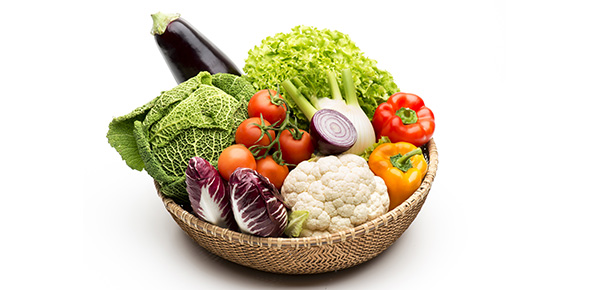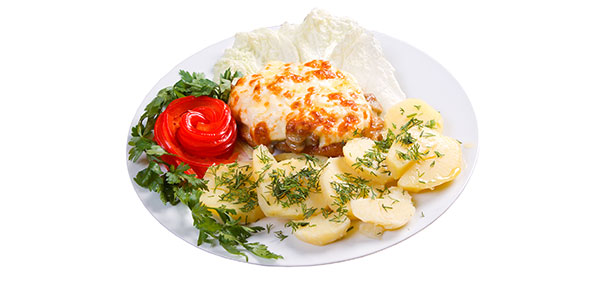Related Flashcards
Cards In This Set
| Front | Back |
|
What are the two categories of vitamins?
|
Water-soluable and fat-soluable
|
|
List the two types of water-soluable vitamins and the four types of fat soluable vitamins
|
Water: B Vitamins (several, don't need to know entire list) and Vitamin C (ascorbic acid).
Fat: ADEK |
|
Grains, fruits and vegetable lack vitamin ______ , while grains, meats and beans are low in vitamin ____.
|
Grains, fruits and vegetable lack vitamin B12, while grains, meats and beans are low in vitamin C.
|
|
What disease was eliminated by mandatory and /or voluntary flour enrichment in the US beginning in 1938? What was the flour enriched with?
|
The disease was pellagra and the flour was enriched with niacin. Pellagra caused +3000 deaths anually prior to 1938.
|
|
Six tips for preserving vitamins in your food:
|
1. store away from heat and light, eat soon after purchase.
2. cut fruits and veggies close to when you will eat. 3/ don't soak veggies b4 you cook them. 4.cook veggies in as little water as possible by baking, roasting, pressure cooking, etc. rather than boiling. 5. if you boil, use the cooking water for soup, etc to gain nutrients. 6. don't rinse rice before cooking (uh, gross... ) |
|
Which is better? Fresh or frozen?
|
Sometimes fresh has been shipped by truck, harvested a week ago, not kept cool enough, etc. Some frozen in frozen in the field or immediately after harvest - may have better vitamin retention.
|
|
What is the difference between enrichment v. fortification?
|
To enrich is to add more of what is already there. To fortify is to add what was not there at all, or what was there in very very low quantity.
|
|
____ soluable vitamins are ___ with dietary ___ , found in ____ foods and can _______ in adipose tissue.
_____ soluable vitamins are ____ absorbed into the ____ , but the excess is _____________________. |
Fat soluable vitamins are absorbed with dietary fat, found in fatty foods and can accumulate in adipose tissue.
Water soluable vitamins are easily absorbed into the blood, but the excess is excreted in the urine. |
|
Define bioavailability. What percentage of vitamins in food is bioavailable? Where are the vitamins primarily absorbed?
|
The extent to which the body can absorb and use a nutrient. About 40-90% of the vitamins if food can be absorbed, primarily in the small intestine.
|
|
What is a provitamin or vitamin pre-curser?
|
A compound that can be converted into the active form of a vitamin in the body. Some vitamins are absorbed in this inactive form and then converted once inside the body.
|
|
Once inside the body, what two factors affect the bioavailability of vitamins?
|
How they are absorbed and transported.
|
|
7 steps to vitamin absorption:
|
1. Mouth: chewing releases.
2. stomach: digestion releases, some niacin absorbed in stomach. 3. gallbladder releases bile which emulsifies fat and helps fat-sol vitamin absorption. 4. pancreas secretes enzymes that aide in release of vitamins from food. 5. small intestine: fat-sol are incorporated into micelles, absorbed by diffusion then packaged in chylomicrons which enter LYMPH before going to blood. 6. small intestine: water-sol are absorbed directly into blood, but many must bind to specific molecules in the gastro system to be absorbed. 7. large intestine: bacteria synthesizes small amounts of vitamins, some of which are absorbed. |
|
Vitamin intake is measured in small amounts. Recall metric measurements:
Gram = Milligram = Microgram = |
Gram = 1 paper clip
Milligram = 1/1,000 paper clip Microgram =1/1,000,000 paper clipclip |
|
What are the 4 steps to utilizing a coenzyme (active vitamin)?
|
1. vitamin combines with chem group to form functional conenzyme (active vitamin).
2. functional coenzyme combines with incomplete enzyme to form active enzyme. 3. active enzypme binds to molecule to form new molecule 4. new molecules are released and enzyme and coenzyme (vitamin) can be reused or separated. |
|
Define coenzyme. Name one type of vitamin that act as a coenzyme.
|
Organic nonprotein substances that bind to enzymes to promote their activity. All Vitamin B act as conenzyme.
|






